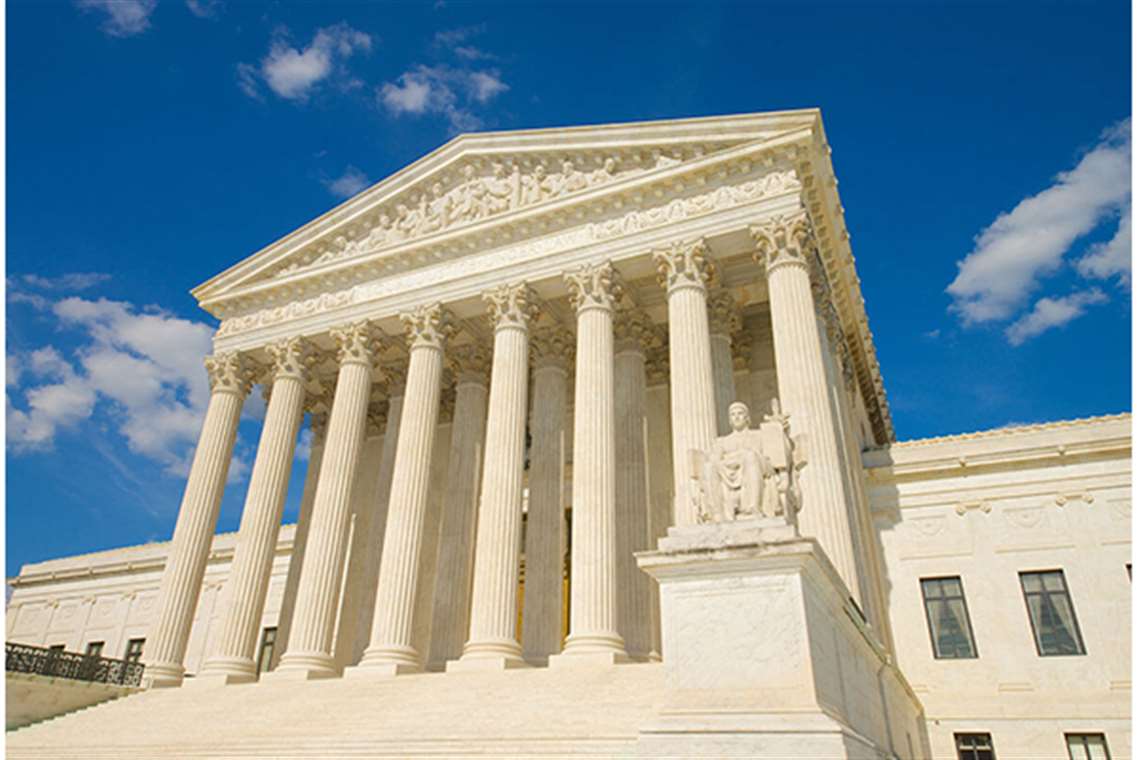Supreme Court Hears Pipeline Case
February 24, 2020

The U.S. Supreme Court heard oral arguments Monday on a case that could have a significant impact on the gas pipeline industry – though like most cases the High Court hears, it has little to do with gas pipelines and everything to do with what federal agency has authority to grant rights of way access.
The case, U.S. Forest Service v. Cowpasture River Preservation Association (CRPA), involves one section of Dominion Energy’s Atlantic Coast Pipeline project, an $8 billion, 2200-mile pipeline intended to transmit gas from the Marcellus Shale region south and east into Virginia and North Carolina.
Part of the proposed route passes under the Appalachian Trail, which is part of the National Park System. The U.S. Forest Service, which maintains the trail, approved a permit to allow the pipeline to pass 600 ft. below the trail at one point. The CRPA sued, arguing that only the National Park Service, operating under the auspices of the National Trails System Act, could issue such a permit on National Park land. In earlier legal action, the Fourth Circuit Court of Appeals agreed with the CRPA, putting a temporary halt to the Atlantic Coast pipeline construction. Atlantic Coast Pipeline LLC appealed, which led to Monday’s hearing.
“The issue in this case is whether the Trails Act converts all federal, state, and private lands traversed by the Appalachian Trail into lands administered by the Park Service,” said Andrew Yang, Assistant to the Solicitor General at the U.S. Dept. of Justice, representing the Trump administration on behalf of Atlantic Coast Pipeline. “It does not.
“The Act simply charges the Secretary of the Interior with overall administration of a trail. It repeatedly distinguishes between the agency administering the trail and the land managing agencies administering the land. The Park Service thus coordinates or agencies and organizations responsible for their own segments of the trail, and informs certain trailwide responsibilities, but the land managing agencies ultimately take care of the trail on their lands.
“If a tree falls on forest lands over the trail, it’s the Forest Service that’s responsible for it. You don’t call the nine Park Service employees at Harpers Ferry and ask them to come out and fix the tree.”
Representing the CRPA, Attorney Michael K. Kellogg, argued that “we know that the Park Service administer these lands because Congress made that very clear in the three interlocking statutes at issue here.
“The Trails Act in 1968 says, without any equivocation, the Appalachian Trail shall be administered by the Secretary of the Interior who has delegated that to the Park Service,” Kellogg said. “The General Authorities Act two years later said all areas administered by the Park Service, without limitation, are part of one National Park
system.
“If it’s administered by the Park Service, it is an area of land or water. Whether it’s a historic building, whether it’s a monument, whether it’s a parkway, or whether it’s a trail, it is — if it’s administered, it counts as an area of land, which the Court (in a previous case) pointed out it’s up to Congress to decide how broadly to use the term “land” in a statute.
“And, finally, the Mineral Leasing Act makes it absolutely clear that it extends the rights for — to all federal lands, except lands in the National Park system.”
As often happens, the justices discussed what might seem arcane issues, such as the definition of “land” and “trail.”
“When I think of a trail, I think of something that is on top of the earth,” said Justice Samuel Alito. “And when I think of a pipeline that is 600 ft. below the surface, that doesn’t seem like a trail. So instead of having to draw this distinction between the trail and the land, why can’t we just say that the trail is on the surface and something that happens 600 ft. below the surface is not the trail?”
“I’m thinking more, there seems to be a debate on some metaphysical level about whether you can have a trail, whether you can have land under it, or interests in land that are different,” said Chief Justice John Roberts. “I just — it doesn’t strike me as that unusual a concept that there are property rights that are distinct from rights in the land.”
Roberts added “if I give somebody an easement to walk across my backyard to get somewhere, I don’t think that I’m giving up the land. It’s still my land.”
To Roberts, Kellogg replied, “Well, as we point out in the brief, there are two definitions of right-of-way. One is an abstract right of passage over somebody else’s land. And the other refers to the strip of land itself over which passage is maintained.
“The Trails Act repeatedly uses the second definition, when it says you are going to require rights of ways for the trail.”
Kellogg later stated, “it’s our position, that if — whatever agency administers the trail also can award, decide right-of-ways across that trail, but only consistent with their own rules and regulations.”
Kellogg also noted that there are 55 pipelines currently running under the Appalachian Trail, 19 of which are on federal land through permanent easements granted before the Trails Act was enacted. “In the past 50 years, since the Trails Act was passed,” he said, “there has not been a single new pipeline right-of-way through federal lands under the Appalachian Trail.”
To read a complete transcript of the one-hour oral argument, click here.
The court is expected to hand down a decision in June.
MAGAZINE
NEWSLETTER

CONNECT WITH THE TEAM








